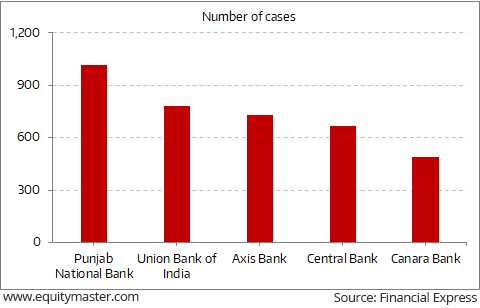Share markets in India are presently trading marginally lower. Sectoral indices are trading on a mixed note with stocks in the energy sector and metal sector witnessing maximum selling pressure. Stocks from the realty sector are trading in the green.
The BSE Sensex is trading down 50 points (down 0.2%) and the NSE Nifty is trading down by 17 points (down 0.2%). The BSE Mid Cap index is trading up by 0.6%, while the BSE Small Cap index is trading up by 0.9%. The rupee is trading at 64.86 to the US$.
In the news from the banking sector, as per a leading financial daily, Reserve Bank of India (RBI) Governor Urjit Patel said that it had very limited authority over state-run banks and called for reforms to give the regulator more powers to regulate state lenders in the wake of the recently unfolded US$ 2 billion fraud.
The above comments by Urjit Patel follow those of Finance Minister Arun Jaitley who questioned the regulator’s role in the wake of the PNB fraud.
Note that the recent fraud at Punjab National Bank in conjunction with the diamond merchant Nirav Modi has put the spotlight on the growing bad loan problems in Indian banks.
It has also brought to the fore the painful issue of willful defaulters, especially after the Vijay Mallya fiasco. The chart below shows the banks that have the highest number of willful defaulters.
Banks with the Highest Number of Willful Defaulters

Unsurprisingly, Punjab National Bank tops the list. But the others aren’t too far behind.
Also note that the share of large corporates, in total advances of the banking sector, has almost remained unchanged over past three years (at an average of 55%).
However, their contribution to incremental slippages has been huge. At one point, the big corporate borrowers accounted for nearly 90% of total NPAs of the sector.
Banks, in principle, must be careful about not extending loans to borrowers with poor creditworthiness or payment track record. That too, irrespective of the size of the borrower.













Leave A Comment